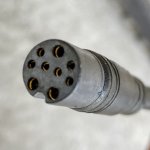Hi,
Im totally new to ebikes, have an electrical background and was hoping people way more knowlegable than me could answer a few basic questions on motors and plugs. I thought when i got this motor with a weird plug "uh oh...."
Ok... I bought a 250W unbranded hub motor that has a 9 pin julet plug. Does anyone have any diagrams on what pin does what please, and can i run them with any off the shelf controller?
Are hub motors with 9 pin connectors actually permenant magnet 3 phase motors driven by a DC-to-3 phase converter?
Are most hub motors 3 phase? I thought maybe they were PWM controlled dc motors?
That should do it for starters...any help much aprreciated. Great site by the way.
Im totally new to ebikes, have an electrical background and was hoping people way more knowlegable than me could answer a few basic questions on motors and plugs. I thought when i got this motor with a weird plug "uh oh...."
Ok... I bought a 250W unbranded hub motor that has a 9 pin julet plug. Does anyone have any diagrams on what pin does what please, and can i run them with any off the shelf controller?
Are hub motors with 9 pin connectors actually permenant magnet 3 phase motors driven by a DC-to-3 phase converter?
Are most hub motors 3 phase? I thought maybe they were PWM controlled dc motors?
That should do it for starters...any help much aprreciated. Great site by the way.



